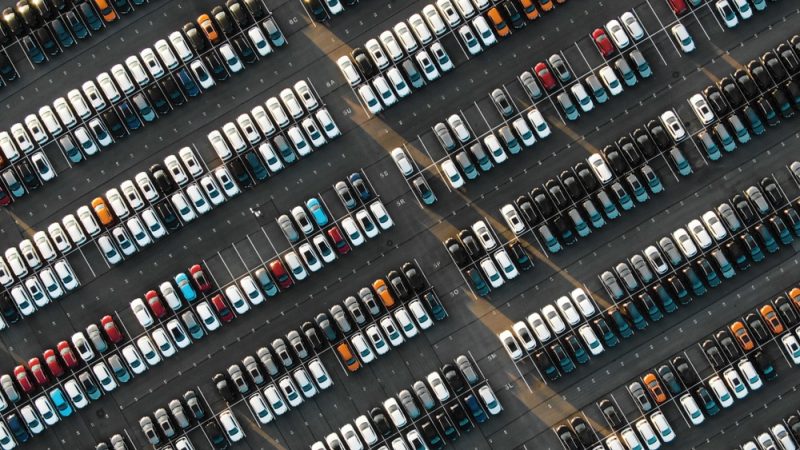The EU will impose additional tariffs of 17.4% to 38.1% on electric cars produced in China, the European Commission announced on Wednesday (12 June), as preliminary results from its anti-subsidy investigation confirmed prices are being distorted by Chinese state support.
The value chain of Chinese electric cars “benefits from unfair subsidisation, which is causing a threat of economic injury to EU battery electric vehicles producers,” EU Commission Vice-President Margaritis Schinas said on Wednesday (12 June).
“When our partners breach the rules, we will assert our rights,” Executive Vice-President Valdis Dombrovskis said in a statement.
“Today we have reached a milestone in our anti-subsidy investigation,” he said, adding that “this is based on clear evidence of our extensive investigation and in full respect of WTO rules.”
Duties will differ per carmaker, with Chinese state-owned manufacturer SAIC facing the highest duty at 38.1%, Chinese Geely to face 20% and BYD 17.4%.



I’ll tell this story in three parts:
Tesla’s US subsidies
China’s EV exports
China’s “overcapacity”
Part 1.Tesla’s US subsidies. Under the US’ Inflation Reduction Act, purchases of new EVs made in the USA were given a tax incentive of $7500. Previously, states such as California has other incentives such as the $7500 incentive under CVRP. How much in subsidies has Tesla received from tax credits alone under the IRA in 2023, ignoring state-level benefits and carryover from pre-2023 benefits? 654000 sales, for a total of almost $5 billion dollars in purchase-side government subsidies. For 2023. We also know that Tesla has received billions in state-level government funding to set up factories in California, and billions more in government funding for their other various efforts. In comparison between 2009 and 2022, China handed out about $28 billion in EV subsidies, much of that at the state-level to encourage companies to set up factories. In fact, Tesla received huge subsidies to set up it’s factories in Shanghai. By the end of 2022, China had phased out most purchase-side subsidies (except some lingering programs that are not set for renewal). Note that the maximum purchase-side subsidy was about $1750. China’s most significant subsidy today is in it’s expansion of the domestic charging network: China makes up 68% of the world’s charging stations, with a huge number of them being fast chargers. Much of that expansion came out of government coffers and is a huge driver for EV adoption in China.
Part 2. China’s EV exports. In 2022, China’s EV exports were as follows, sorted by volume:
270k - Tesla
140k - SAIC (mostly under the British brand MG)
72k - European joint ventures
55k - BYD
(others)
So, let’s be more clear about what the EU means: they don’t like that foreign companies (including European ones, but mostly Tesla, and almost all European/American brands) are setting up shop in China to produce cars for export.
Part 3. China’s “overcapacity”. It’s no secret that China has pitiful O&G reserves. Oil, notably, is needed for ICE vehicles, but not for EVs. That is, the switch to EVs is a matter of national security for China as it reduces Chinese reliance on foreign oil supplies. Indeed, a huge proportion of Chinese EV production is going to the domestic market, and exports make up only about 10% of total sales (for reference, this number is more like 70% for Toyota).
To sum it up: unlike Toyota/Japan (and others), China is consuming the vast majority of its production. Meanwhile, a huge number of it’s exports are from foreign companies. It’s most notable exporter is Tesla, which is notable for having received $5 billion in purchase-side tax incentives in 2023 in the US… Alone. This is compared to $28 billion between 2009 and 2022, most of which have been phased out, and for which a big proportion was to encourage setting up factories in specific provinces or to build out a domestic charging network.
Edit: to clarify, China does have more car factories than they know what to do with. This is because ICE companies are getting fucked by EV companies. All those factories dedicated to producing ICE cars? Fucked. Idling. Useless. Sales of all cars in China: Volkswagen (-0.2% YoY), Toyota (-3.8% YoY), Honda (-12.3% YoY), Nissan (-14.3% YoY). The only foreign brands that are staying alive in China are EV brands like Tesla (+20% YoY) and luxury cars like BMW (+7.8% YoY) and Audi (+11.3% YoY). These idling ICE factories are currently being closed by the government and the government is limiting licenses handed out for new factories.
Ironically, Tesla is a large part of the reason why Chinese EVs are so cheap because they started the price war… They just couldn’t win it.
America could have held on to the EV market if they kept Tesla in America but instead Elon took it for a gander and outsourced all production to China.
Fremont factory, Nevada Gigafactory, Texas Gigafactory, Berlin Gigafactory…
Gee, Tesla sure outsourced all production to China.